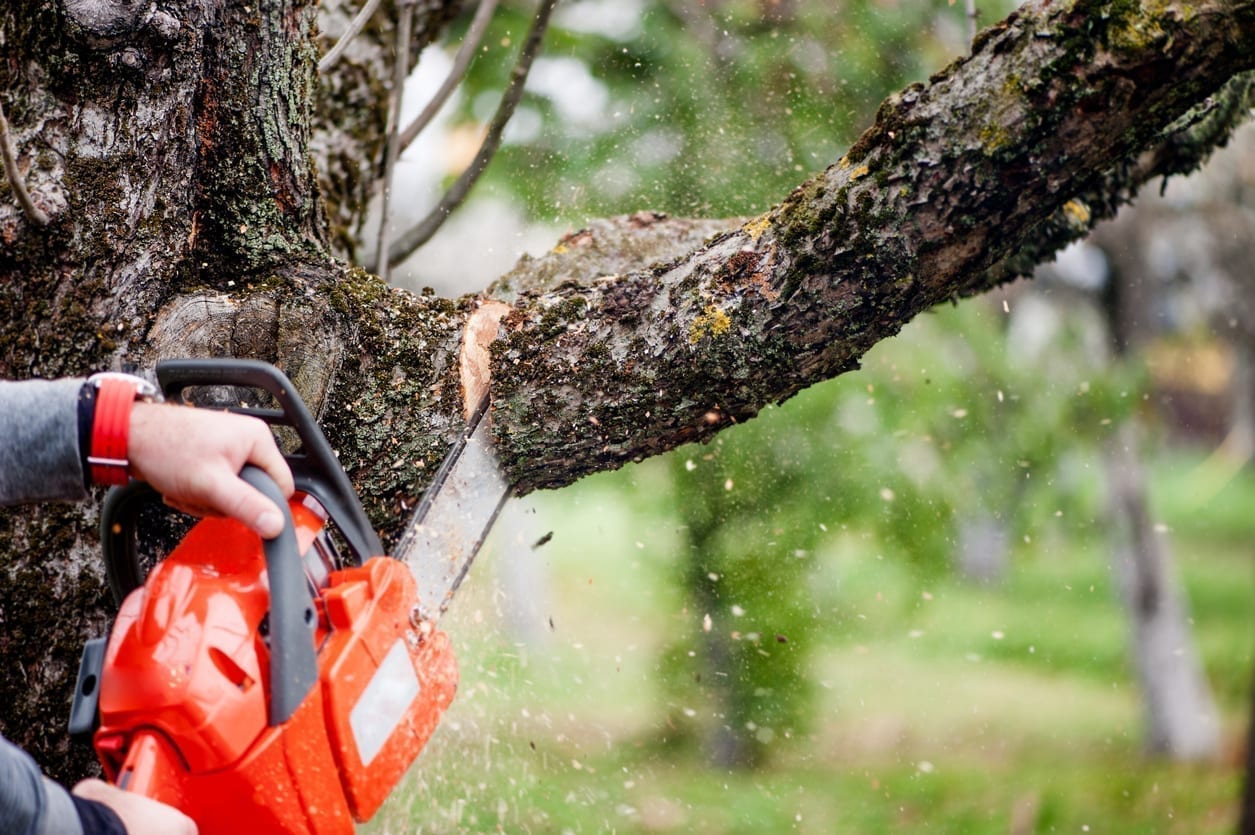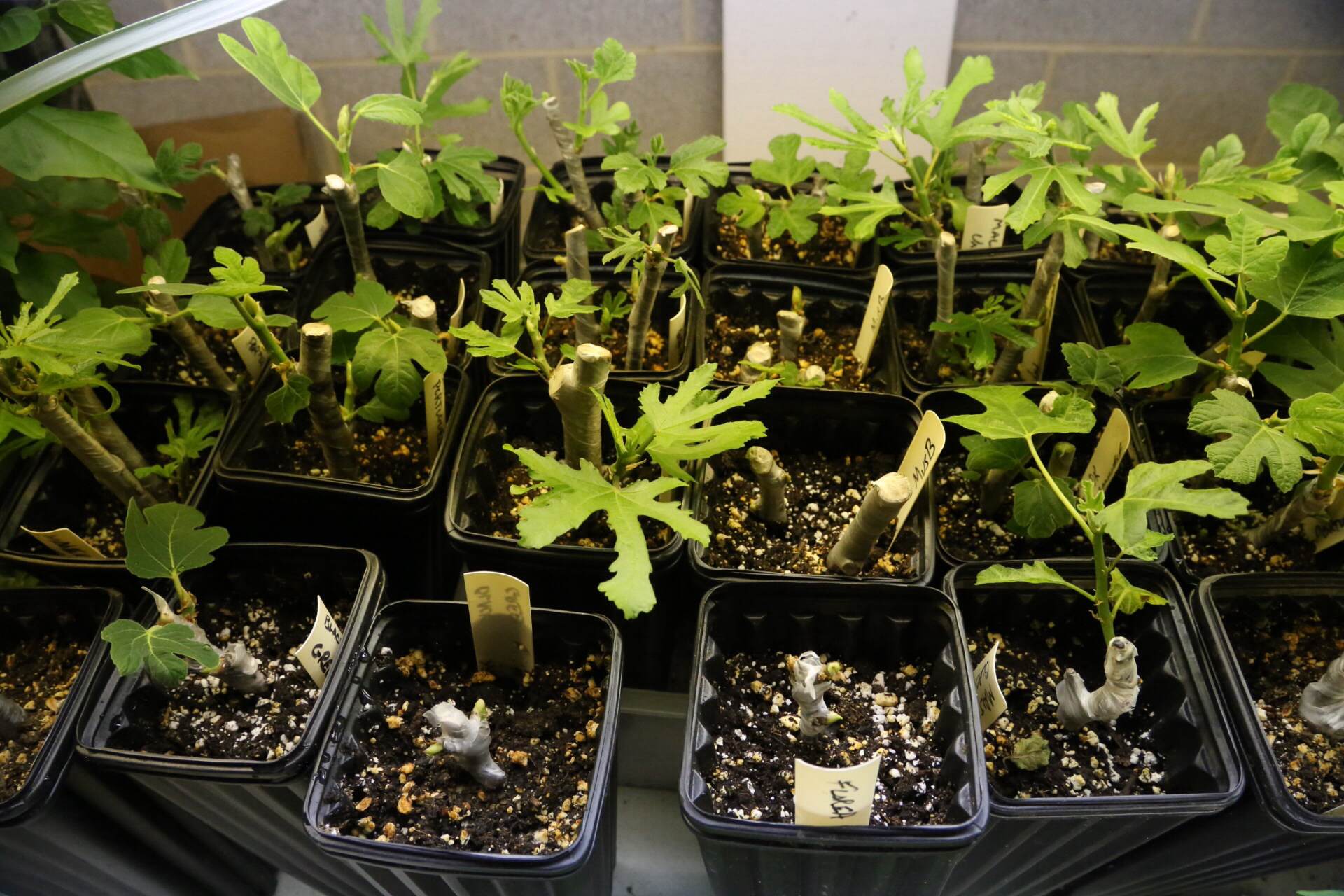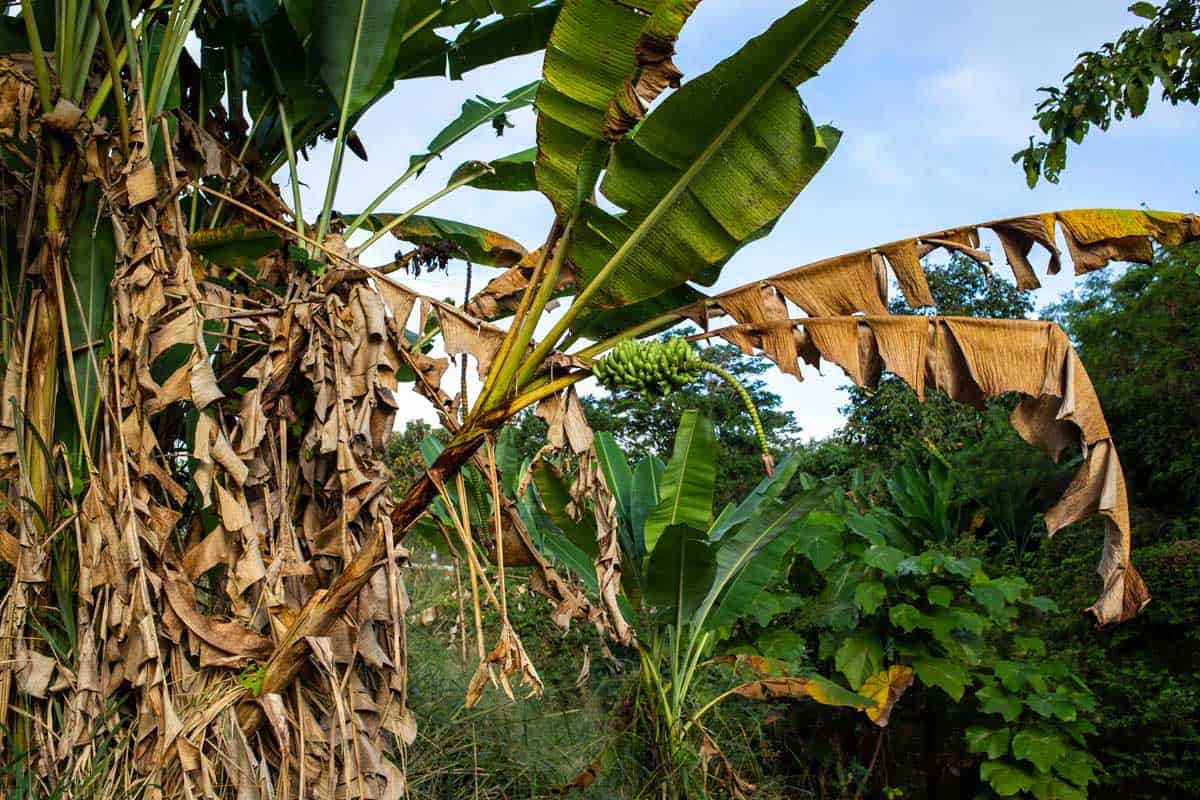Home>Gardening News and Trends>Latest News>What Trees Can Be Cut Down Without Permission


Latest News
What Trees Can Be Cut Down Without Permission
Modified: January 22, 2024
Stay updated with the latest news on what trees can be cut down without permission. Learn about the regulations and guidelines for tree removal in your area.
(Many of the links in this article redirect to a specific reviewed product. Your purchase of these products through affiliate links helps to generate commission for Chicagolandgardening.com, at no extra cost. Learn more)
Table of Contents
Introduction
When it comes to tree cutting, there are often rules and regulations in place to protect the environment and ensure the preservation of green spaces. However, in certain situations, trees can be cut down without permission due to various reasons such as safety concerns, invasive species, or to maintain essential views. Understanding these circumstances can help property owners make informed decisions and avoid any legal complications. In this article, we will explore the different scenarios in which trees can be cut down without seeking prior permission.
It’s important to note that while these regulations may vary between different jurisdictions, the principles discussed here provide a general guideline. Local laws and regulations should always be consulted before proceeding with tree removal.
Knowing when trees can be cut down without permission is crucial, as it allows property owners to address potential risks or issues promptly. This not only ensures the safety of residents and their property but also supports the overall health and balance of the ecosystem.
Next, we will delve into the specific situations in which tree cutting can be done without prior permission, providing valuable insights and guidance for property owners who may be facing such circumstances.
Understanding Tree Cutting Permissions
Before we explore the instances where trees can be cut down without permission, it’s important to have a basic understanding of tree cutting permissions and regulations. Typically, local governments and conservation authorities have specific guidelines to manage tree removal and ensure sustainable practices.
In most cases, obtaining a permit or permission is necessary for tree removal, particularly for large, healthy trees. This is done to protect the environment, preserve green spaces, and maintain the overall aesthetics of the area. Violating tree cutting regulations can result in hefty fines and legal penalties.
However, there are circumstances where obtaining permission may not be required due to the nature of the tree or the situation. These exceptions are typically outlined in local bylaws or regulations, and vary depending on the region.
It’s crucial to familiarize oneself with the laws and regulations specific to one’s area. Consulting with local authorities or hiring a certified arborist can provide valuable guidance and ensure compliance with relevant regulations.
Understanding tree cutting permissions is essential for making informed decisions about tree removal. It helps property owners navigate potential legalities and ensures that the removal is justified, considering the impact on the environment and surrounding ecosystem.
Trees That Can Be Cut Down Without Permission
While it’s generally necessary to obtain permission for tree cutting, there are specific circumstances where trees can be removed without seeking prior approval. Here are six common situations where tree removal can be done without permission:
- Dead or Dying Trees: Trees that are dead or dying pose potential risks as they can fall or shed branches unexpectedly. Removing these trees can help prevent property damage and ensure the safety of residents.
- Hazardous Trees: Trees that are leaning precariously or have structural issues, such as large cracks or rot, may be considered hazardous. Immediate action should be taken to remove these trees to prevent accidents and property damage.
- Invasive Trees: Some tree species are classified as invasive, meaning they rapidly spread and overtake native plant species. Removing invasive trees can help protect the biodiversity of an area and prevent them from crowding out native plants.
- Trees with Disease or Infestation: Trees that are severely infected with diseases or plagued by insect infestations may need to be removed to prevent the spread of the issue to nearby healthy trees. This is especially important to protect the overall health of a forest or green space.
- Trees Blocking Essential Views: In certain situations, trees may grow and obstruct essential views, such as road signs, traffic signals, or necessary visual access points. Removing these trees can improve visibility and ensure public safety.
- Trees Endangering Property or Public Safety: If a tree poses an immediate threat to nearby structures, such as buildings, power lines, or roads, it may need to be removed promptly to prevent potential accidents and property damage. In such cases, it’s important to consult with local authorities or professionals to assess the situation accurately.
It’s crucial to keep in mind that although these situations generally allow for tree removal without permission, it’s still advisable to consult local regulations and authorities to ensure compliance. Additionally, preserving and maintaining the ecological balance should always be taken into consideration when deciding to remove a tree.
Dead or Dying Trees
Dead or dying trees not only detract from the visual appeal of a property but can also pose significant risks to both property and personal safety. As a result, these trees are often allowed to be cut down without seeking permission.
Dead or dying trees are structurally weak and can easily collapse, especially during severe weather conditions. The falling branches or the entire tree itself can cause extensive damage to structures, vehicles, or even harm individuals. Therefore, it’s crucial to identify and remove these trees promptly.
Signs of a dead or dying tree include bare or brittle branches, absence of new growth, decaying trunk, or the presence of fungus or pests. If a tree shows these signs, it’s essential to consult with a certified arborist or tree professional to assess the situation accurately.
Removing dead or dying trees not only eliminates the safety risks but also provides opportunities for new growth and prevents the spread of disease or infestations to nearby healthy trees. Moreover, removing dead or dying trees improves the overall aesthetic value and curb appeal of a property.
It’s worth noting that although dead or dying trees can often be cut down without permission, it’s still advisable to check local regulations and consult with local authorities to ensure compliance. Additionally, it’s recommended to hire a professional tree service to perform the tree removal, as they have the expertise and equipment to safely handle such situations.
By removing dead or dying trees promptly, property owners ensure the safety of their property, enhance the visual appeal of their surroundings, and contribute to the health and preservation of the overall ecosystem.
Hazardous Trees
Hazardous trees are those that pose an imminent danger due to their compromised structural integrity. These trees may have significant lean, large cracks in the trunk, weakened roots, or extensive decay. Removing hazardous trees is crucial to prevent property damage, injury, or even loss of life.
Identifying hazardous trees requires careful observation and assessment. Warning signs include branches hanging low or in danger of falling, visible splits or cracks in the trunk, uprooting or leaning towards structures or high-traffic areas, or signs of extensive decay.
When a tree is deemed hazardous, it’s vital to act quickly and engage a certified arborist or professional tree service to assess and remove the tree safely. In emergency situations where immediate action is necessary, such as after a severe storm, it may be permissible to cut down hazardous trees without seeking permission beforehand.
Removing hazardous trees not only eliminates the risks associated with falling branches or toppling trees but also safeguards surrounding structures, power lines, and public areas. By taking proactive measures to address hazardous trees, property owners contribute to the overall safety and well-being of the community.
However, it’s important to note that while hazardous trees may generally be cut down without permission, it’s essential to consult with local authorities or tree professionals to ensure compliance with any specific regulations or guidelines. They can provide guidance on the appropriate course of action and ensure that the removal is conducted safely and in accordance with local requirements.
Overall, removing hazardous trees is an essential step in maintaining a safe environment and preventing potential accidents or property damage. By identifying and addressing these risks promptly, property owners ensure the well-being of their community and protect their property’s value.
Invasive Trees
Invasive tree species are non-native plants that aggressively spread and outcompete native vegetation, leading to a disruption in the natural balance of an ecosystem. Due to their rapid growth and ability to dominate the landscape, invasive trees are often allowed to be cut down without seeking permission.
Removing invasive trees is crucial to protect the biodiversity and health of the ecosystem. These trees can have detrimental effects on native plant species, which are essential for providing food and habitats for local wildlife.
Examples of invasive tree species vary depending on the region, but some common examples include the Tree of Heaven (Ailanthus altissima), the Callery Pear (Pyrus calleryana), and the Russian Olive (Elaeagnus angustifolia).
Cutting down invasive trees helps preserve native habitats, restore the ecological balance, and prevent further spread of these invasive species. However, it’s important to properly identify the tree and consult with local authorities or experts to ensure accuracy and compliance with specific regulations in your area.
Removal methods for invasive trees may include mechanical or chemical means, depending on the size and extent of the infestation. Hiring a professional tree service with experience in invasive species management is recommended to ensure effective and responsible removal.
By actively removing invasive trees, property owners help protect the native ecosystem, maintain biodiversity, and support the overall health of the environment. It’s a crucial step in preserving the natural beauty and functionality of our landscapes.
Trees with Disease or Infestation
Trees that are severely affected by diseases or infestations can become a threat to the health of other nearby trees and vegetation. In such cases, it may be permissible to cut down these trees without seeking permission.
When a tree is infected with a disease or infested by pests, it can weaken the overall health of the tree and potentially spread the issue to surrounding vegetation. Common tree diseases include Dutch Elm Disease, Oak Wilt, or Citrus Canker, while pests like the Emerald Ash Borer or Asian Longhorned Beetle can cause significant damage.
Removing trees with diseases or infestations is crucial to prevent the further spread of the problem and preserve the health of the overall ecosystem. It helps protect other trees from becoming infected or infested, which can lead to widespread damage and loss of valuable plant species.
It’s important to consult with local authorities, tree professionals, or certified arborists to accurately identify the disease or infestation and determine the appropriate course of action. In some cases, treatment options may be available to save the tree, but in severe cases, removal may be the most effective solution.
When removing trees with diseases or infestations, proper disposal procedures should be followed to prevent the spread of the issue. This may include chipping the wood or burning it in a controlled manner to eliminate any potential sources of reinfection.
By proactively cutting down trees that are severely affected by diseases or infestations, property owners not only protect the health of their own trees but also contribute to the overall well-being of the ecosystem by preventing the spread of harmful pathogens or pests.
Trees Blocking Essential Views
While trees are often regarded for their beauty and environmental benefits, there are situations where they can obstruct essential views, posing safety risks or hindering necessary visibility. Removing trees that block essential views is generally allowed without seeking permission.
Essential views can include road signs, traffic signals, intersections, driveways, walkways, or areas where visibility is crucial for public safety. Overgrown branches or trees can obscure these views, potentially leading to accidents, injuries, or property damage.
Property owners should assess their surroundings and identify any trees or branches that obstruct essential views. Trimming or removing these trees can significantly improve visibility and ensure safe navigation around the area.
It’s important to consult with local authorities or transportation departments to ensure compliance with any specific regulations or guidelines related to view obstruction. They can provide guidance on the appropriate course of action and ensure that the removal is conducted safely and in accordance with local requirements.
While addressing trees that block essential views is crucial, it’s also essential to strike a balance between safety and environmental preservation. Considerations should be given to alternative solutions, such as selective pruning or trimming, to maintain the benefits of trees while restoring necessary visibility.
By removing trees that obstruct essential views, property owners prioritize public safety, improve overall visibility in the area, and mitigate the risks associated with obscured views. It’s an important step in creating a safer environment for both pedestrians and motorists.
Trees Endangering Property or Public Safety
In certain situations, trees can pose a direct threat to property or public safety, necessitating their removal without seeking permission. These trees may be at risk of falling, have extensive root systems damaging underground infrastructure, or obstruct emergency access routes.
When a tree puts nearby structures, such as buildings, fences, or utility lines at risk, it’s crucial to address the situation promptly. The tree may have leaning trunks, weakened branches, or signs of extensive root damage that make it prone to falling during harsh weather conditions or even under normal circumstances.
In some cases, trees may have aggressive root systems that damage underground pipes, sewer lines, or foundations of nearby structures. Removing these trees becomes necessary to prevent further damage and costly repairs.
Additionally, trees that obstruct emergency access routes, such as fire hydrants or roads, can significantly impede the response time of emergency services. Promptly removing such trees ensures the safety and efficiency of emergency operations.
When faced with trees endangering property or public safety, it’s important to consult with local authorities, such as the municipality or fire department, to assess the situation accurately and determine the appropriate course of action. In urgent cases, emergency services may grant permission for immediate removal to mitigate potential risks.
Hiring a professional tree service experienced in dealing with hazardous trees is advisable to ensure the safe and efficient removal of trees that pose a threat. These experts have the knowledge and equipment necessary to handle such situations without causing additional damage.
By removing trees that endanger property or public safety, property owners not only protect their assets but also contribute to the overall safety and well-being of the community. It ensures the integrity of structures, prevents obstructions to emergency services, and fosters a safer environment for residents and visitors alike.
Conclusion
Understanding the circumstances in which trees can be cut down without seeking permission is important for property owners and anyone involved in tree management. While regulations and guidelines may vary depending on the region, there are common scenarios where tree removal is usually allowed.
Dead or dying trees, hazardous trees, invasive trees, trees with disease or infestation, trees blocking essential views, and trees endangering property or public safety are some of the situations where permission may not be required for tree cutting.
It’s crucial to note that even in these instances, it’s still advisable to consult local regulations, authorities, or certified arborists to ensure compliance and obtain professional guidance. Local laws and bylaws can provide specific guidelines and requirements that must be followed to ensure responsible tree management.
By being aware of these specific circumstances, property owners can make informed decisions regarding tree removals, balancing the preservation of the environment and the safety of their property and the community. Responsible tree management helps to uphold the aesthetics, functionality, and safety of the surrounding area, while also contributing to the overall health and balance of the ecosystem.
Whether it’s removing dead or hazardous trees, addressing invasive species, managing trees with diseases or infestations, improving essential views, or mitigating risks to property and public safety, prompt tree removal can lead to numerous benefits. However, it’s always essential to prioritize compliance with local regulations and seek professional advice to ensure safe and responsible tree cutting practices.
By following the appropriate procedures and guidelines, property owners can maintain the beauty and health of their landscapes while promoting the well-being of the environment as a whole.







